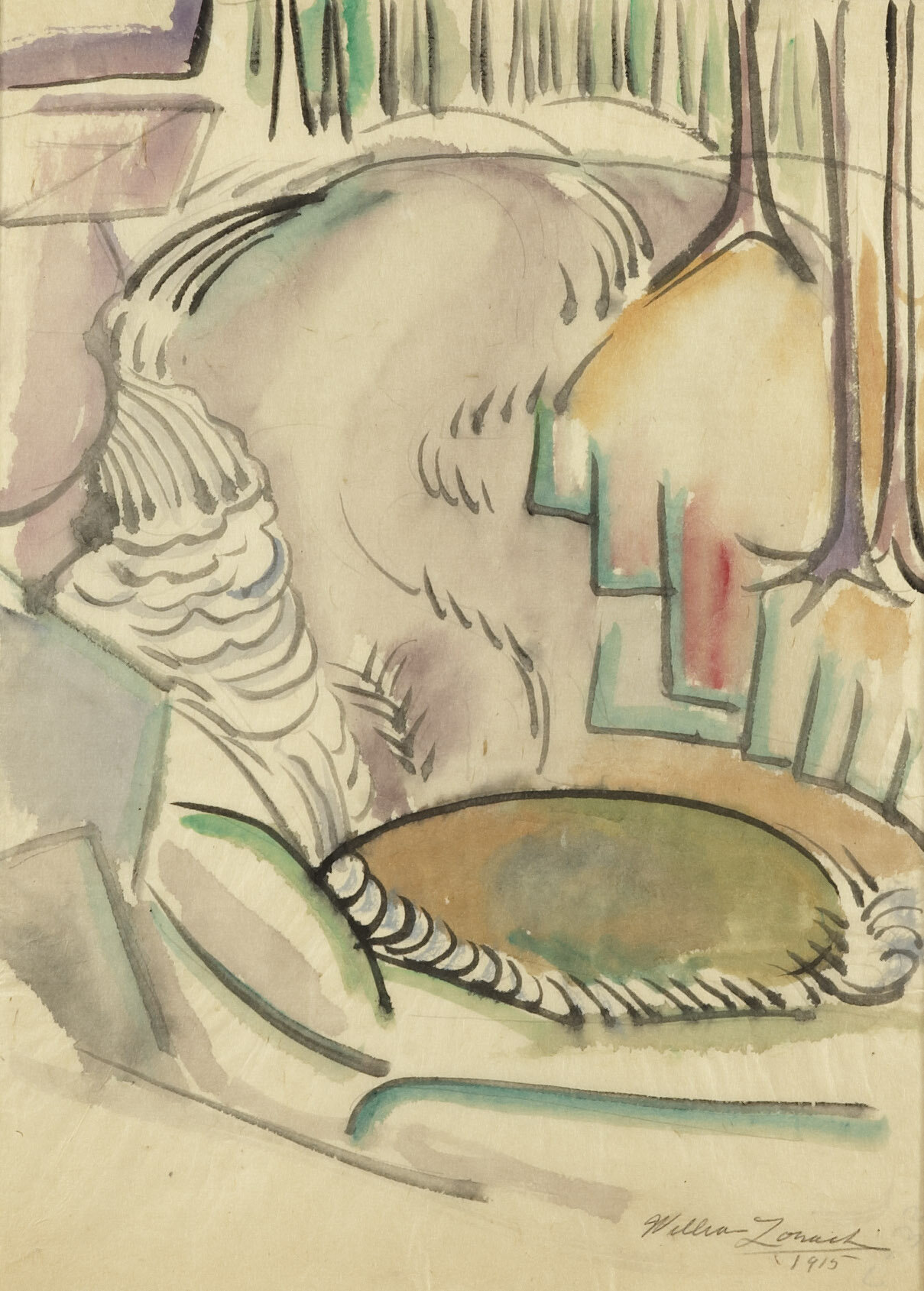
William Zorach
"For more than half a century he had been immensely productive as a sculptor…at times his reputation prospered to the point of quite dominating the sculptural scene in this country...Zorach clearly represented a touchstone of taste."
— Hilton Kramer, New York Times, January 31, 1967
Photograph by Alfred Stieglitz
Bill Zorach was born in Lithuania in 1887, emigrated to the United States when he was four not knowing a word of English, grew up in poverty, and left school in seventh grade. He then worked unsuccessfully in a variety of low-paid, entry-level jobs. Finally apprenticing as a lithographer, he saved whatever he could, and paid his own way to art school, first in his hometown of Cleveland, then New York, and finally Paris. It was in Paris where he met Marguerite Zorach; she persuaded him of the merits of the startling new trends in art. He was successful in Paris from the beginning; he had four pictures accepted and two “hung in the line” at the juried, avant-garde Salon d’Automne. His paintings scandalized critics when he participated in the seminal Armory Show of 1913, the notorious show that introduced modernism to America. He also participated in a famous and much more selective exhibition, The Forum Exhibition of Modern American Painters in 1916.
He had a calling not just to be an artist but discovered, not long into his career, his specific calling to be a sculptor; he taught himself the principles and methods of sculpture. He soon abandoned oil painting but continued to paint with watercolors, which he loved; his watercolors are meditations and odes to the constantly changing world around him, its moods, light, colors, character, and specific features. While these two media differ dramatically from one another, Bill conveyed a shared message when he worked in them. As a sculptor along with a few others, he pioneered the art of direct carving, and was unique in often using very hard, colored, and patterned stones like granite boulders, which he often found himself on walks. His work was inspired by the stones he used and is more expressive (especially of love, strength, and inner peace), spontaneous, and simplified than that of his predecessors. There is also a spirituality to them. Bill was very thoughtful and articulate about his work. He can be mistaken as a conservative or representational sculptor only by those unfamiliar with his immediate predecessors. Critics, collectors, and the public greatly admired Bill because he treated subjects of longstanding importance and affection to humanity with freshness, dignity, and restraint while emphasizing sculptural values. He was among the best known and respected sculptors of his generation, wrote a text about sculpture that is still used today, and was also beloved as a teacher.
He died in Maine in 1966.
“There is much of pain and exhalation in creative work. A resistless, relentless power that makes one ever create. This is my sculpture...It’s a sort of inner vision. It is seeing with a spirit that is timeless. It is love that is felt so intensely that the artist has to record it to give it back to humanity; for love is not only getting but giving.” - William Zorach
"Interior and Exterior", 1919, oil on canvas
"Woman (Head of Ceto)", 1965, red porphyry
"The Wild Country–Grenada", 1962, watercolor
Maquette of "Mother and Child" for the Mayo Clinic, 1953, bronze on a black marble base
"Landscape with Waterfall", 1915, watercolor and pencil
"New Horizons: Mother and Child", 1951, bronze
(Acquired by a private collector - February 2021)
"Five Apple Trees on a Hill", 1914, watercolor and pencil
"Dog Sleeping", 1935, bronze
"View of the Desert", 1964, watercolor









